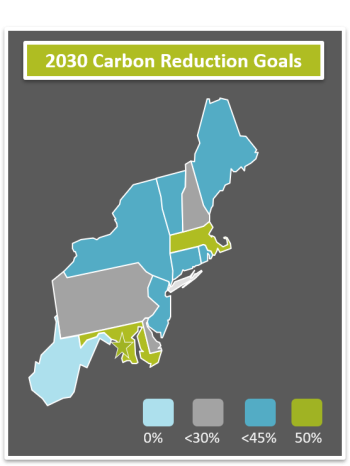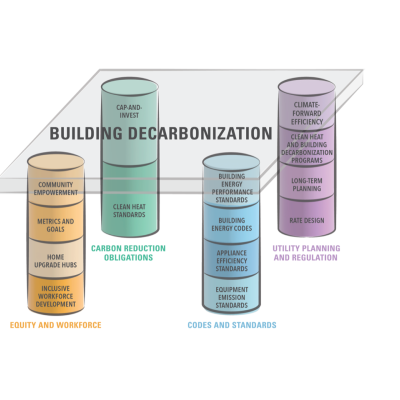
NEEP's Policy & Programs work includes conducting research and analysis related to best practices in the efficient use of energy in buildings and industry. NEEP serves as a resource to policymakers and program administrators, among others. To learn more about NEEP's state-specific work, take a look at our Regional Roundup and the 2021 Energy Efficiency Snapshot.
Achieving state climate goals will require a comprehensive set of actions, across different sectors and involving different stakeholders. In 2024, NEEP published Decarbonizing Buildings: How States Can Set the Table for Success to help states achieve their goals. This brief presents a comprehensive policy framework for states to advance building decarbonization through setting a building decarbonization table. It describes four key policy areas, which can be thought of as legs of a table for effectively supporting building decarbonization: equity and workforce initiatives, carbon reduction obligations, codes and standards, and utility planning and regulation. Each of these legs includes a range of policy options, from mandatory programs to voluntary approaches and investments to fit states’ specific goals.


